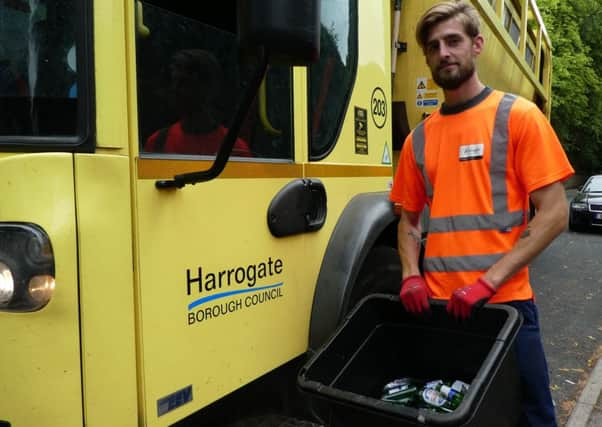The Zero Carbon Harrogate column with Jemima Parker


For Dame Ellen MacArthur, returning from her round the world yacht race in 2005, it was reflecting on the perilous state of the world’s resources that prompted such a thought.
She said “I just saw this as the greatest challenge I had ever come across.”
Advertisement
Hide AdAdvertisement
Hide AdMacArthur decided to try and make a difference by giving up competitive racing to set up the Ellen MacArthur Foundation to promote a less wasteful use of resources.
Her aim was to encourage the move from a linear economy, in which things are used and then wasted, to a circular one in which they are maintained, repaired, re-use and recycling.
The idea of a circular economy is gaining traction globally.
The EU and China signed a co-operative agreement on circular economy policy this June, while businesses including Unilever, Google, Arup, and Nike are now working partners with the Ellen MacArthur Foundation.
Advertisement
Hide AdAdvertisement
Hide AdBut it’s not just about government and big business. Back to that first question again: what can we do as individuals?
In the words of another seafaring sustainability advocate, solo ocean rower Roz Savage MBE: “Every action counts.
“One oar stroke didn’t get me very far, but you take five million oar strokes and you end up crossing three oceans. Every single oar stroke was necessary. And so is the participation of every single one of us.”
Take aluminium. Recycling aluminium takes just 5% of the energy needed to extract it from raw materials – so the energy saved when you recycle a single aluminium can is enough to run a television for three hours.
Advertisement
Hide AdAdvertisement
Hide AdIt’s one oar stroke and it makes a small difference. But when everyone does it, it makes a big difference. Apply the same thinking to steel and glass, which can be recycled time and time again, and the energy and carbon savings start to stack up.
However, of the 57,500 tonnes of waste collected in our district between 2010-2015 only around 40% was recycled.
While this figure can be increased, we must also find ways to reduce the amount of waste we create, and to re-use wherever possible.
Consider clothing, which has the fourth largest environmental impact after housing, transport and food.
Advertisement
Hide AdAdvertisement
Hide AdThe amount we buy has doubled in 15 years, but the number of times an item is worn has fallen by 20%.
Half of high street fashion is disposed of within a year, at a carbon cost of 26.2 million tonnes in 2016.
We can help to reduce that carbon cost. By reducing the amount of clothing we buy and throw away, and instead looking for better-made clothes that won’t fall apart so soon, we can make an individual difference that, collectively, can really add up.
By reducing, re-using and recycling, we can all make a difference and achieve a low carbon, resilient and sustainable future for the Harrogate district.
Advertisement
Hide AdAdvertisement
Hide AdThe recycling team at Harrogate Borough Council is very pro-active and keen to get us all involved in recycling more.
Their representative, Kate Dawson, will be speaking about recycling in the Harrogate District at the next Zero Carbon Harrogate meeting on Thursday 13 September.
Visit www.zerocarbonharrogate.org.uk for more information.